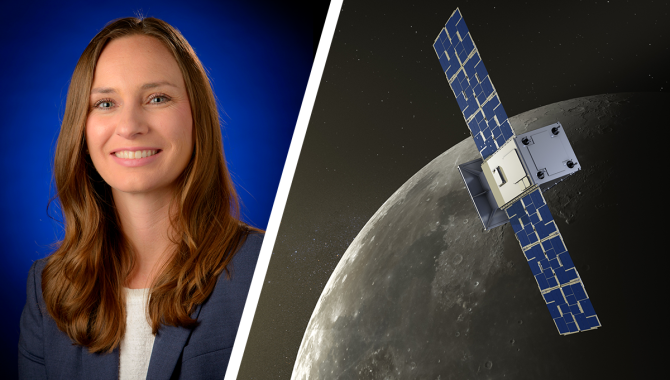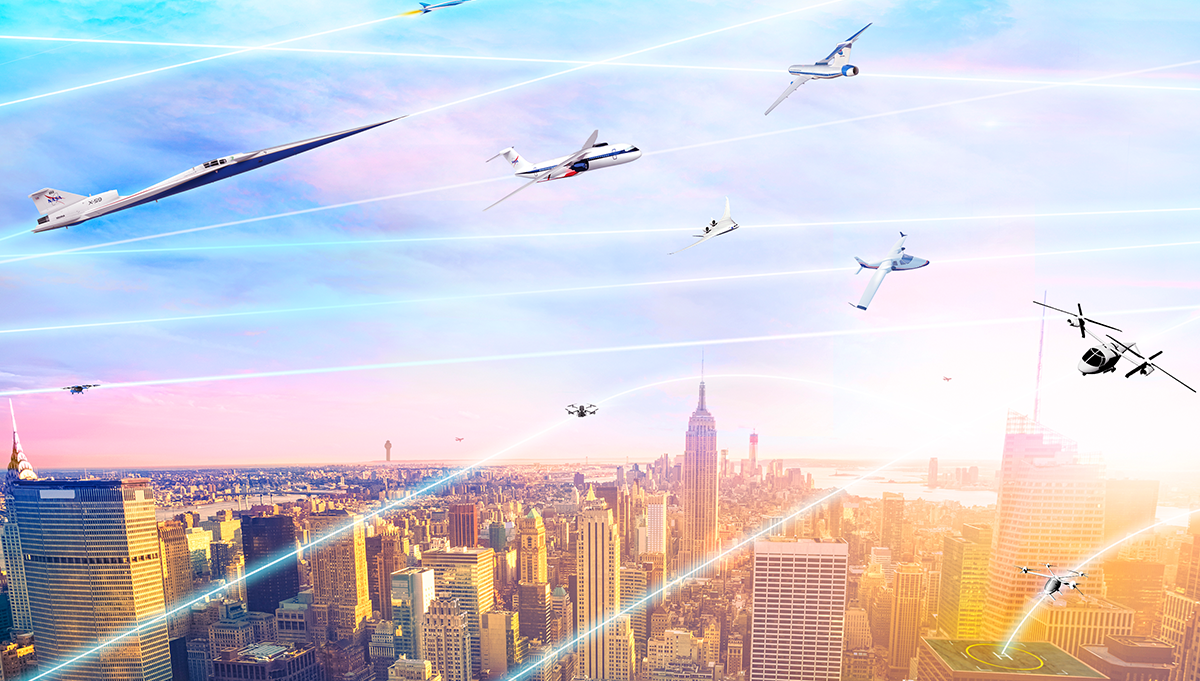
Space Technology Mission Directorate CKO Alesyn Lowry.
Credit: NASA
Alesyn Lowry discusses knowledge sharing in NASA’s Space Technology Mission Directorate.
Disclaimer: This material is being kept online for historical purposes. Though accurate at the time of publication, it is no longer being updated. The page may contain outdated information or broken links. Current Knowledge Community Corner articles are available here.
Alesyn Lowry serves as the Chief Knowledge Officer (CKO) for NASA’s Space Technology Mission Directorate (STMD). Lowry, the Acting Director for STMD Strategic Planning and Integration, oversees strategy, performance management, and integration activities for STMD programs valued over $1 billion. She advises STMD senior leadership on long-term strategy, technology investments, and tactical direction essential to accomplishing NASA’s mission and long-term objectives. STMD rapidly develops, demonstrates, and transfers revolutionary, high pay-off space technologies, driven by diverse ideas. The knowledge management function resides in STMD’s Strategic Planning and Integration Office.
What are your thoughts on how knowledge sharing affects mission success?
Knowledge sharing is essential to accomplish anything new or hard. Without that knowledge of what came before, you run greater risk of failure, or of duplication. In technology development, we must understand prior successes and failures to know the next best place to make advancements. Failing forward—or purposefully and deliberately using failure to find success—is the best way to learn.
A knowledge sharing culture is especially key: the culture of asking for and freely giving help and advice. That level of support is key for any mission, including developing new technologies. Sometimes when we’re looking at internal proposals, we’ll see very similar proposals on the same topic from different NASA centers. We’ll tell those people to talk and make sure their proposals are informed by one another and that they’re not duplicative. Sometimes those people will come back with a combined proposal that’s even better than the two original proposals. That’s a beautiful thing to witness, and that comradery will help change the possible in aerospace.
Are there any successful knowledge efforts or best practices in your organization that you’d like to highlight?
We have a monthly technical briefing to share technical information about our projects and portfolios. Topics may span from closeout presentations of major demonstrations to project lessons learned. The target audience is the STMD support offices, program offices, and program executives, and it keeps everyone close to our core mission and our technology developers and their challenges and successes.
We created an Information Ecosystem Community of Interest (CoI), stemming from a need for information gatherers and analysts of all kinds to collaborate. This group goes a step beyond typical Communities of Practice by serving as a sounding board or brainstorming group for people looking to solve a problem. For instance, someone came to this group asking how to improve their business process at a low cost. In under an hour, the group not only provided them with best practices and sources to refer to, but it collaborated to develop step-by-step instructions to implement. With a group distributed across the centers, this CoI has been instrumental in sharing knowledge among people who otherwise would have never interacted.
Do you have a favorite story or example of successful knowledge sharing?
In my old organization, the Strategic Investments Division in the Office of the Chief Financial Officer, we were charged with conducting a variety of analyses for different stakeholders in senior leadership at the agency. However, the analyses were usually one-offs to answer a specific question for a specific stakeholder. Therefore, the results were not widely known or understood, even though the applicability was broad across the agency and had the potential to change how we manage our centers as well as programs and projects. In order to share the information in a condensed and easy-to-read-format, we created the Insights Book – a volume of a dozen or so two-to-three-page analyses results with easy-to-identify key findings. We are now on Volume 11, and it is shared across all centers and programs semi-annually as well as presented regularly at the Agency Program Management Council.
What are some of the most prominent knowledge challenges in your organization?
STMD is unique at NASA with its project diversity. At any given point we have over 1,100 active technology projects. Most last two years or less, but many last longer. These projects span technology areas: from propulsion to sensors to models and more. They span Technology Readiness Levels—from early-stage concepts through suborbital or in-space demonstration. These projects may be led by civil servants, universities/research institutes, or companies. With such great diversity, there’s often not a lot of common ground among projects that would be conducive to knowledge sharing. Our challenge is enabling impactful knowledge sharing at local levels while gleaning cross-cutting knowledge that will allow us to run our programs more effectively.
Are you observing any trends or cultural shifts that affect knowledge management going forward?
For years we’ve observed an increasing trend to rely on commercial partners for increasingly complex services. The latest major examples are the Commercial Crew Program that uses industry to launch crews to the ISS and the Commercial Lunar Payload Services Program that will use industry to launch payloads to the Moon. So much aeronautics and space knowledge is now distributed across industry. In Space Technology, we do this through our Tipping Point opportunity where we select multiple vendors to develop their own technologies—to ~TRL 6—that we later intend to buy as a service, by providing them a boost in funding to do so. However, we allow them to keep the data and Intellectual Property rights, but the challenge also extends to deeper institutional knowledge as well. For NASA to succeed in its mission, it now must navigate sharing as much valuable knowledge as possible while respecting the needs of companies to retain certain proprietary information.
What impact are technologies such as machine learning and artificial intelligence beginning to have on your knowledge sharing activities?
There’s nearly always been a desire to use technology and data to further enable knowledge sharing, including better search and recommender systems. As software and data science skill sets become more common in the workforce, we also see a greater appetite to invest in these technologies. One of our programs is pursuing a model-based program management initiative to automate using best practices and sharing information among projects and managers. Langley Research Center published a Lessons Learned Bot to automatically search for lessons learned based on your project plan. We see this trend continuing as skill sets continue to evolve and software and data technologies become more affordable and ubiquitous.









